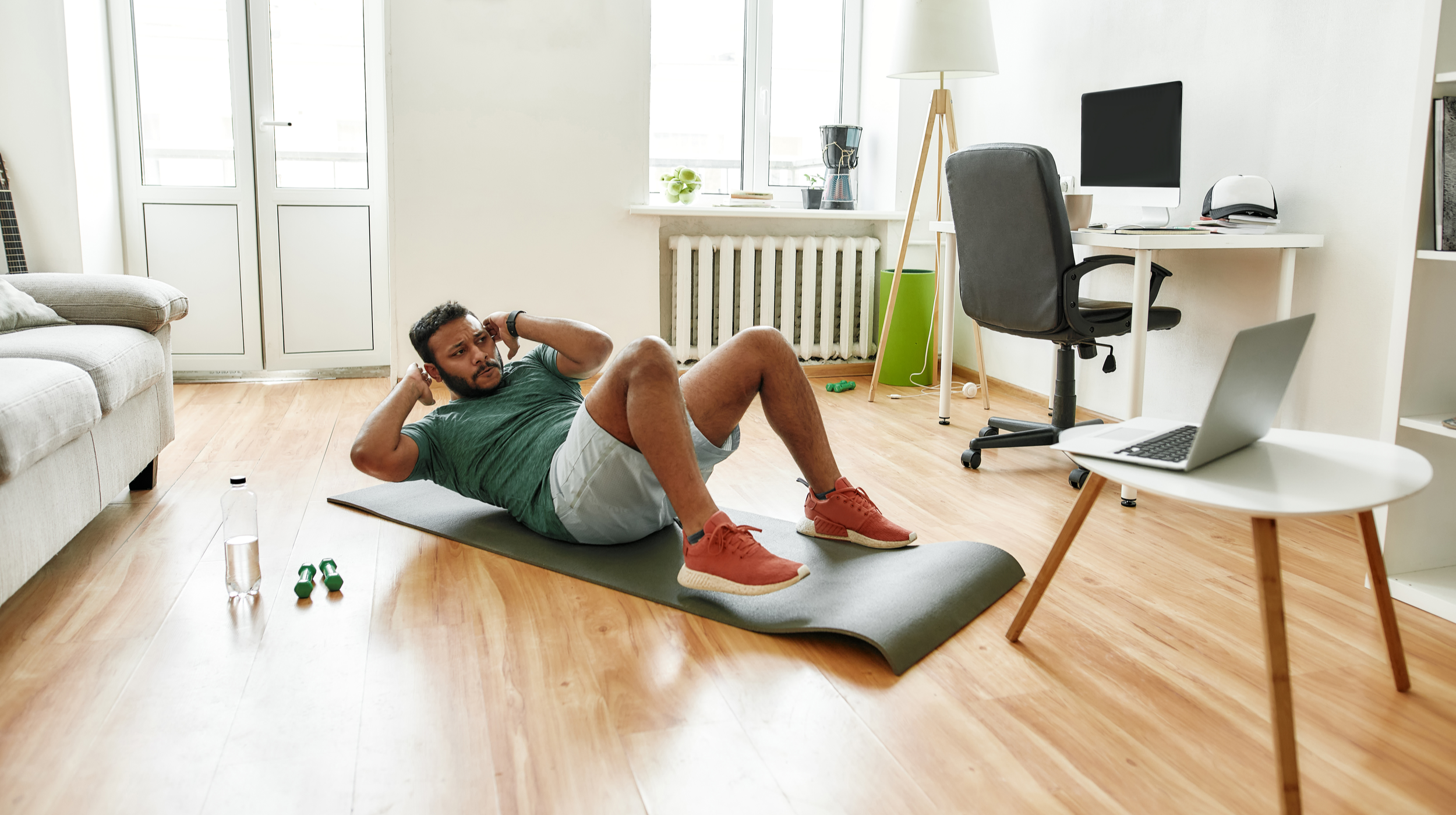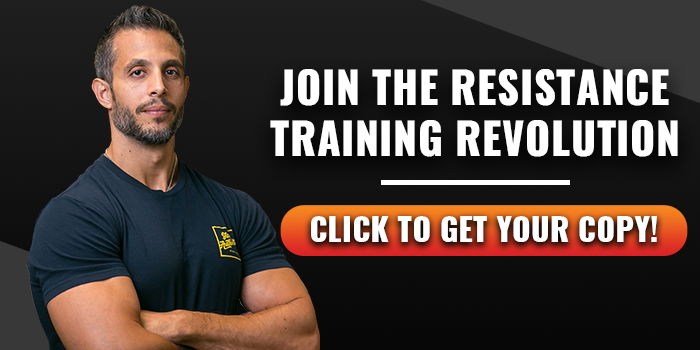Putting a strength training routine at home doesn’t have to be complicated or difficult. The biggest things to keep in mind are what causes muscle growth. Once you factor those concepts in, putting together a routine (with limited equipment) becomes a little easier.
Progression
Muscle growth occurs when a stimulus is placed on a muscle that was progressively harder than the week before. When most people think of this they traditionally think of just using heavier and heavier weights. This is definitely one solution. I’m going to assume however, that if you are building a routine at home, some of you are limited on equipment, however these techniques can apply to those with a regular gym setup as well.
Reps
Reps is going to be my first recommendation. Research shows, growth can still occur anywhere up to 30 reps assuming you're taking it to failure as you get higher in reps (because it's presumably a weaker stimulus than super heavy weight). The stimulus may not be as great as having weights, but we’re working with what we got. Now that we know this, you want to take whatever bodyweight, band, or suspension trainer exercises you are doing and work within these rep ranges. Every week, try and do one more rep than last time, and be willing to take it pretty much to failure.
Example -
Week 1 - TRX Rows - 3 sets of 20
Week 2 - TRX Rows - 3 sets of 21 or higher
Eccentrics
You can also take this time to focus on strength in other ways. People tend to focus so much on pushing heavy weight in a normal gym, they shorten their range of motion, and aren’t really maximizing their growth potential. Focusing on eccentrics forces you to slow down your speed, and get really good quality reps. Using eccentrics means you focus on really slow, and controlled lowering of a movement.
Example -
Week 1 TRX Row - 3 sets of 8-10 (focusing on 4-5 seconds to lower yourself to the bottom part of the row)
Week 2 - 3 sets of 8-10 with the same focus but trying to either get one more rep than last week. Prioritize form and time under tension over trying to get the rep.
Isometrics
Take a 2-3 second contraction at the top of the movement (squeeze as hard as you can when the muscle is fully flexed). Do that for each rep. That should help bring the reps back down to the 10-20 range. By focusing on a squeeze, you’re teaching your mind-muscle connection to KEEP that intended muscle working which is how it gets the signal to grow. Stop swinging the arms to get a curl in. FOCUS on keeping a contraction!
Example
Week 1 - TRX Row - 3 sets of 8-10 (focusing on squeezing for 2-3 seconds at the TOP part of the movement) This should force the reps to go down lower than usual since again, you are spending more time focusing on time under tension which will make each rep significantly harder than just going through the motion.
Pre-Exhaustion
Pre-exhaustion is when you take a more isolating exercise and target the muscle more directly before hitting it again with a compound. So instead of just doing bodyweight squats, maybe try lunges with your back foot elevated on a chair, and do 10-15 reps with each leg, and THEN go into bodyweight squats. You should find those 30+ reps of squats you can do drop to half the amount.
Example
Week 1 -
A1) Rear Foot Elevated Lunges - 3 sets of 10-15 reps
A2) Squats - 3 x AMRAP
Putting it All Together:
Weeks 1-4: add 1-2 reps from the previous week on each exercise
Weeks 5-8: 2-3 second isometric contractions for each exercise. If you can try to add a rep or two from the week before.
Weeks 9-12: Use a 3-4 eccentric negative for each exercise. If you can try to add a rep or two from the week before.
Weeks 13-16: Choose an isolating pre-exhausting exercise for the bigger movements (squats, pushups, rows, etc.) Shouldn’t really need it for smaller ones like shoulders or arms.
This isn’t the only template to follow but just an example. It should give you a nice novel stimulus to spend a training block focusing on, and then allow you to move onto a new stimulus without making the workout stale.






